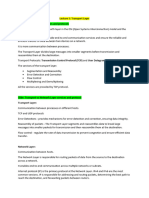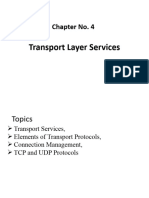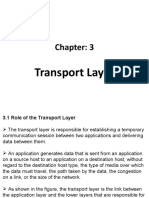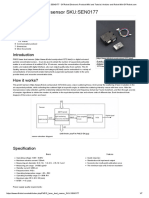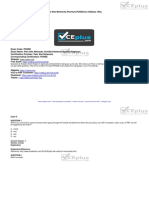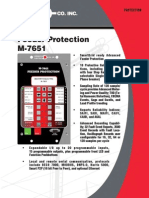0% found this document useful (0 votes)
162 views16 pagesServices Provided by The Transport Layer
The transport layer provides logical communication between application processes running on different hosts. It implements protocols like TCP and UDP that provide services like multiplexing, reliable data transfer, and flow control. The transport layer controls lower layers and ensures end-to-end delivery of data between applications across networks.
Uploaded by
Captain AmericaCopyright
© © All Rights Reserved
We take content rights seriously. If you suspect this is your content, claim it here.
Available Formats
Download as DOCX, PDF, TXT or read online on Scribd
0% found this document useful (0 votes)
162 views16 pagesServices Provided by The Transport Layer
The transport layer provides logical communication between application processes running on different hosts. It implements protocols like TCP and UDP that provide services like multiplexing, reliable data transfer, and flow control. The transport layer controls lower layers and ensures end-to-end delivery of data between applications across networks.
Uploaded by
Captain AmericaCopyright
© © All Rights Reserved
We take content rights seriously. If you suspect this is your content, claim it here.
Available Formats
Download as DOCX, PDF, TXT or read online on Scribd
/ 16



















